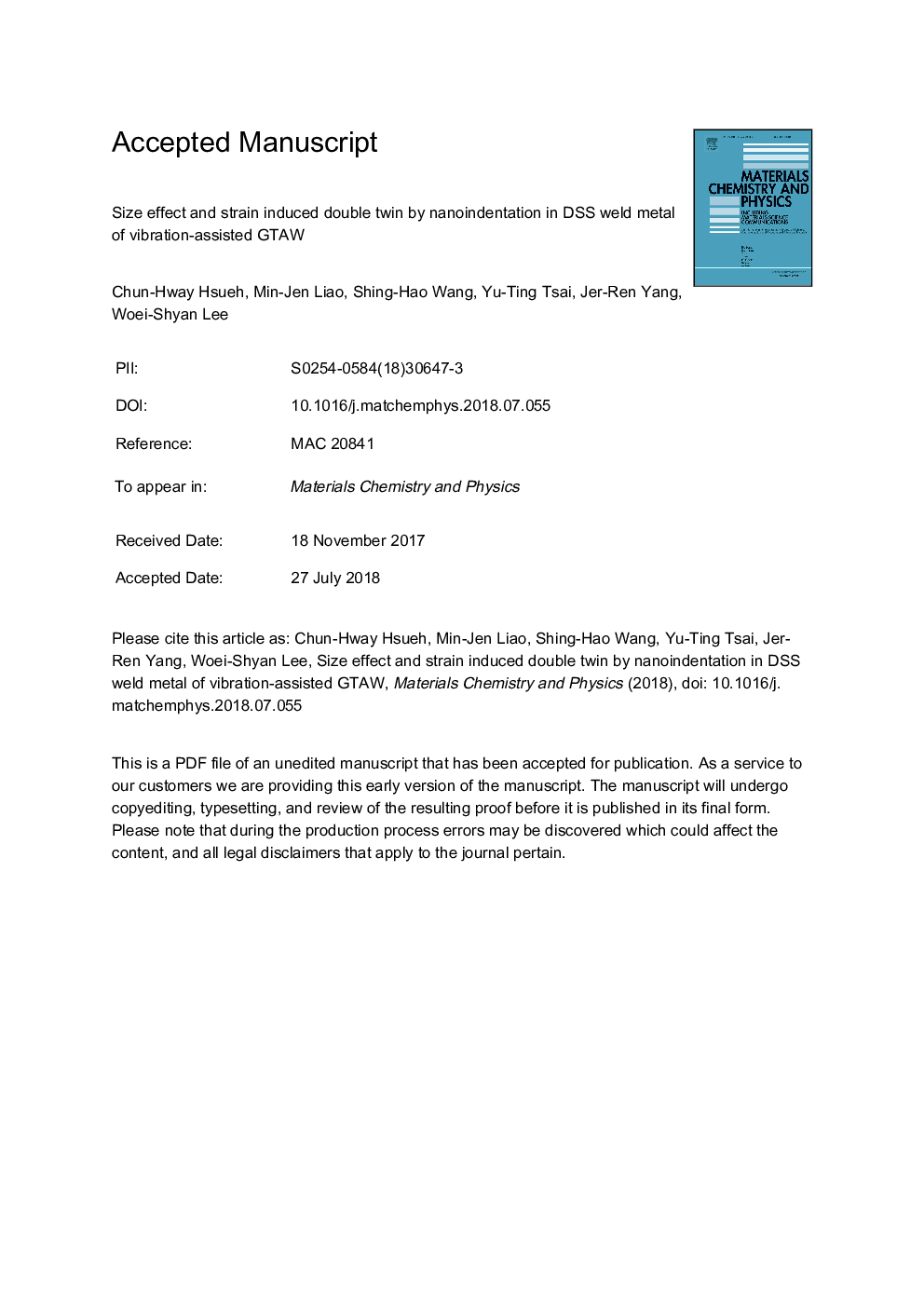| Article ID | Journal | Published Year | Pages | File Type |
|---|---|---|---|---|
| 7921135 | Materials Chemistry and Physics | 2018 | 37 Pages |
Abstract
The nanohardness values and modulus of the prior δ phase in both direct current (DC) and vibration-assisted (VIB) weld metal were higher than those of the base metal. The dislocation density in the δ phase matrix was the highest in the VIB weld metal, followed by the DC weld metal and the base metal. Therefore, the higher nanohardness value in the δ phase, especially for the VIB welding, was attributed to the existence of a higher dislocation density. By contrast, the nanohardness values of the γ phase in both weld metals were not affected by the welding process. The predicted nanohardness value of the composite phase with the rule-of-mixture was consistent with the result of nanoindentation measurements. The deformation induced a V-shaped double twin was revealed by the effect of nanoindentation on the austenite grain of the VIB weld metal.
Related Topics
Physical Sciences and Engineering
Materials Science
Electronic, Optical and Magnetic Materials
Authors
Chun-Hway Hsueh, Min-Jen Liao, Shing-Hoa Wang, Yu-Ting Tsai, Jer-Ren Yang, Rudder Wu, Woei-Shyan Lee,
